Ioana Vreme-Moser is an artist and transmedia narrator originally from Timișoara. Since 1999 she has been investigating the relations between bodies (her own especially) and circuitry. The kinds of organic-electronic synesthesia and symbiosis that she creates, challenging her audience through interactive installations or performance pieces, almost always push the boundaries into this “grey” area of audio/video/tactile experimentalism. Having taken part in over 30 exhibitions and festivals over the years, starting with the Simultan festival, which made her famous, Ioana does not make the kind of art that you can’t understand if you don’t read the exhibition text. With a solid background in ballet, she knows how to explore and exhibit her body (for instance through make-up connected to circuits) but also how to challenge viewers through new approaches which run the stylistic gamut from live (unrepeatable) noise to the already established field of electro-acoustic music. Her alter ego Coquetta (more on her later) bases her practice both on pure, do-it-yourself experiment and on found or fetishized objects (like a pair of red stilettos turned into synthesizers). Her main area of interest in her explorations is based on the interactions between digital and organic, between virtual and real, and, especially, between body and meta-body, which can of course be altered through technology. Besides the subtle humor in her works which is often based around a narrative thread, Ioana Vreme-Moser makes use of electronic devices discarded by Berliners (among whom she has been living for a few years), sound sculptures, obsolete technologies, or instruments that she invents or assembles herself.
Your works are situated at the intersection between visual, sound, and performance art. Given your background in ballet, could one say you are a performer that later took up electronic music? How did you manage to find a balance?
When I was a child, dancing ballet and drawing went on in parallel. I prefer to see drawing as the lynchpin of everything I’ve done so far. Ballet introduced me into the world of the stage, make-up, and lines traced through movement. I approached electronica from a drawing perspective, through functional diagrams. Copper wires and nodes made of semiconductors and passive elements. The sound is composed of the alternations and movements in the circuit. When I compose, I first think of the little bits of circuitry and the interaction between the elements. Oftentimes I start out with an image of how an instrument would function and look like and then adjust the sound-generating circuits. Regarding my experience with ballet, it seems to me that I have continued doing the same thing, only with different methods. I flirted with the idea of interdisciplinarity for some time. I drifted from medium to medium until I found myself an umbrella under which to integrate various practices. I’m part of the Erasmus generation, I studied intermedia in Krakow for a year. It’s there that I started attending the Wednesday night gatherings in the electro-acoustic studio. Next came various actions with Marek Chołoniewski’s collective. I held my first partly or fully sound-based performances in the middle of certain shopping centers in the suburbs of Krakow.
When did you feel you had to introduce the classic performative element into your art?
From the very beginning I wanted the instruments or sound objects that I built to perform on their own, to eliminate the need for me to appear in person. The situation changed when I began building synthesizers. Someone had to switch them on and turn their potentiometers. From that point on I began appearing on stage with them, having the added benefit of my ballet stage experience.
I’d like to talk a bit about Coquetta, your most famous work. It seems like a project you are constantly improving. Can we speak of Coquetta as a kind of alter ego? How do you see this work, what is the idea you started from and how do you see its development?
Over time it did become an alter ego. It started after I salvaged a make-up kit from the trash (it’s amazing how many functional things get thrown away here). My initial intention was to transform women’s items and used electronic appliances into sound machines. I then became interested in the ritual of applying make-up and of coquetry, and also in the technology involved in the process, throughout history. I tailored my character starting from my aspirations as a little girl influenced by ads in the 2000s. Coquetta was to be an absolute diva with a slim waist and excessive make-up and beauty habits.
I built my instruments based on cosmetic tools. I assigned each sound according to the toxicity of the substance applied to the skin. For example lead binds the history of the lipstick with that of solder. I knew I would have to give it a dissonant sound.
For each appearance I construct a different Coquetta, one adapted to the space I am about to enter. In South Korea, for example, I designed a Coquetta with electric USB hair curlers and other local “beauty” devices. I don’t yet know how far I will take the character, but I may come up with a few pandemic versions. Corona Coquettrona.
Please tell me a bit about what you call Beauty Machinery. How does the sound change in time under the influence of the make-up? Is the make-up kit the only instrument?
Beauty Machinery is the whole compendium of electronic machines that I’ve developed in time. From ultrasonic perfume to pressure-resistive stilettos to motorized eyeshadow, all are part of an improvised beauty salon. The performance follows standard make-up procedure. Every cosmetic step is designated by its own sound, the skin foundation, for example, is a raspy sound made with a saw, on which I then build the composition.
The sensors introduced in the powder containers emit a certain charge that then changes the oscillation of a tone generator or the frequency of a filter. The circuits I work with are, for the most part, basic, analogue, with some personal modifications. Certain instruments were conceived with a separate circuit: for example, the lipstick, upon contact with the lips, becomes a dentist’s drill due to a series of CMOS (Complementary Metal-Oxide Semiconductor) logic gates. The wig boxes where the basic instruments are can operate on their own as well. The cosmetic application ritual follows gently on the makeup table until the lipstick is applied.
Eroticism plays an important part in your aesthetics. How do you understand electronic eroticism and how does it manifest, especially given your mention of Barbie? What is the message and, most importantly, what is at stake?
Eroticism appears in absurd situations. I enjoy playing with the dissonance between objects and the gestures applied to them. I derive a kind of enjoyment from having circuitry be tenderly touched and tickled. As for Barbie, she is a mind twister and a sister of Coquetta. I prefer to leave the message up to the audience.
You have Coquettized multiple objects, like your red stilettos, to which you added voltage-controlled oscillators as well as multiple entrances, which reminds me of a mini modular synthesizer. What other objects will you transform with electronics?
At the moment I’m working on a suitcase that doubles as a make-up studio in case I decide to travel after the pandemic. During the last few months my partner and I finished Titstronics, a wearable breast synthesizer that will soon be integrated into my arsenal. In any case, I aim to make my instruments into a more modular, compact, and versatile format.
What do you think of the symbiosis between performer and the circuits they create/modify at will?
During the performance I apply layer after layer of make-up, altering my appearance in an excess of color. The sound builds up in parallel towards a noisy crescendo. The instruments simultaneously apply color pigments to my face and electrical currents to the circuits. The transformation takes place in parallel, symbiotically.
Besides the circuitry that you modify yourself, what electronic instrument would you like to use?
There are many historical instruments that I would like to touch, but generally I prefer to work with my own circuits. Building instruments is always a big part of how I create electronic sounds. Personally I prefer to be able to configure the transistor drawings within the boxes. Usually I have a pretty clear idea of what I want to hear when I turn on the device, and the most direct path starts from a circuit diagram drawn on tracing paper.
From Kairotoskope (my favorite, which I also wrote about here) to Tête-ài-tête or Kraftbox T10, to Fluid Memory, your most recent installation, most of your works are perfectly suited for an art gallery or a museum. What is your relation to the white cube? Did you ever have connections with private galleries or collectors?
It’s not a very clearly defined relationship. I have exhibited and performed in a variety of contexts, but mostly within state galleries and media, noise, or electronic music festivals. I didn’t want to enter the “collectable” art scene. At the moment I make a living from workshops, other didactic activities, and performances.
What artists – Romanian or otherwise – inspire you in making your installations? What artists/theories inspired you at the beginning?
I can say I was lucky to have developed under the wing of the Simultan experimental arts festival in Timișoara, which was also the first Romanian space/collective to actively support me. I have vague memories of the first editions, when I was still a child, with its noise performances I enjoyed with my fingers in my ears (as the volume was too loud for me).
It was through Simultan that I met most of the artists that inspired me towards an experimental approach. I was also fortunate to have a family that encouraged me to pursue art, for which I am extremely grateful.
How do you relate to Berlin, especially post-gentrification? How is the underground/experimental music “scene” and, most importantly, how is living in the T10 collective like?
I see Berlin as a node: people come and go, but we always meet back here. Techno-tourism aside, the underground experimental scene was enriched by the artists coming here from all parts of the world. There is still a strong underground, of course, but it’s becoming harder and harder to dig it up from under all the superficiality.
Many have a very critical view of the city’s potential and future. Perhaps the pandemic will halt gentrification. As for T10, I’m surrounded by artists with very different approaches, which is a great advantage. Overall I’m glad to be here.
What is your critical view on the alternative “scene” in Romania?
I think it has reached an interesting point and I’m curious to see how it will evolve after the pandemic. I hope it develops its own identity and not just a rehash of what’s happening in the west. Romania has great potential when it comes to art. And I also hope the art scene comes together and offers mutual support, especially now, in a time of crisis.
And, last but not least, how has the current pandemic affected or is affecting you?
Like with everyone active in the cultural sector, having all out projects cancelled does not make for a very optimistic period. I’m grateful that I can sit in my studio and watch the outside world through my window. In Berlin restrictions are a bit more relaxed, but we’ll see how it all develops. I try to use my time to think up new projects for the fall. In our studios, the atmosphere is the same, everybody is working and cooking with style.
Translated by Rareș Grozea
POSTED BY
Miron Ghiu
Obsessed with new technology and a close manipulator of all sounds, Miron Ghiu lives in a continuous present. He enjoys bathing online and hanging out offline, surrounded by loads of buttons to press ...
mironghiu.wordpress.com

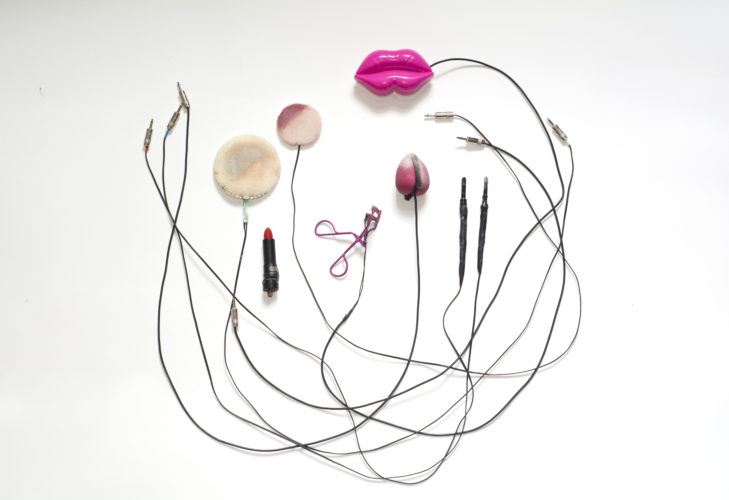

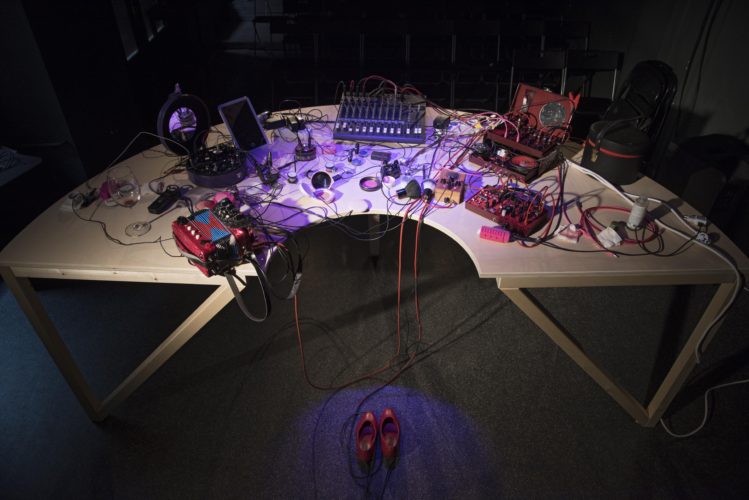
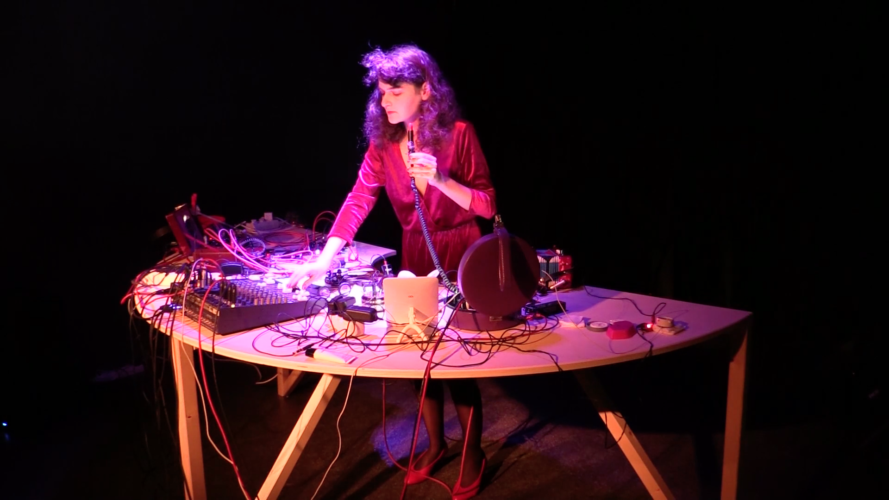
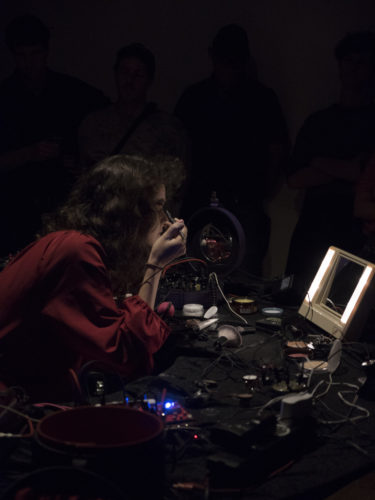
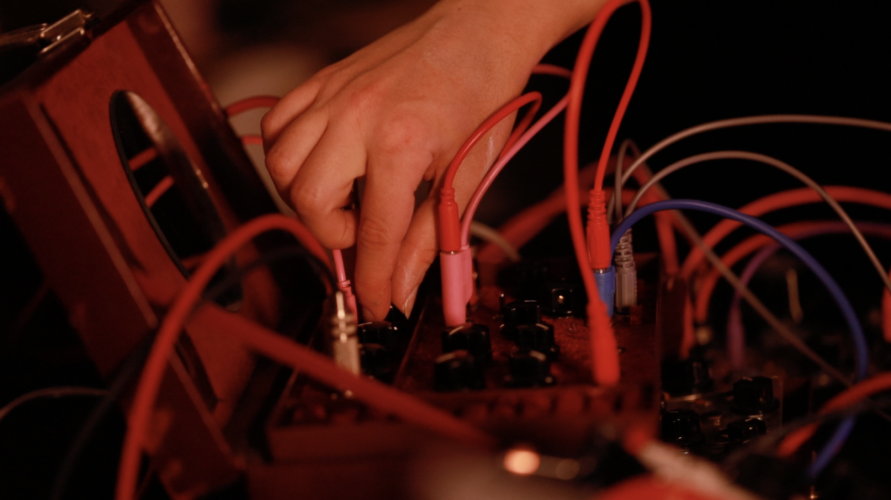
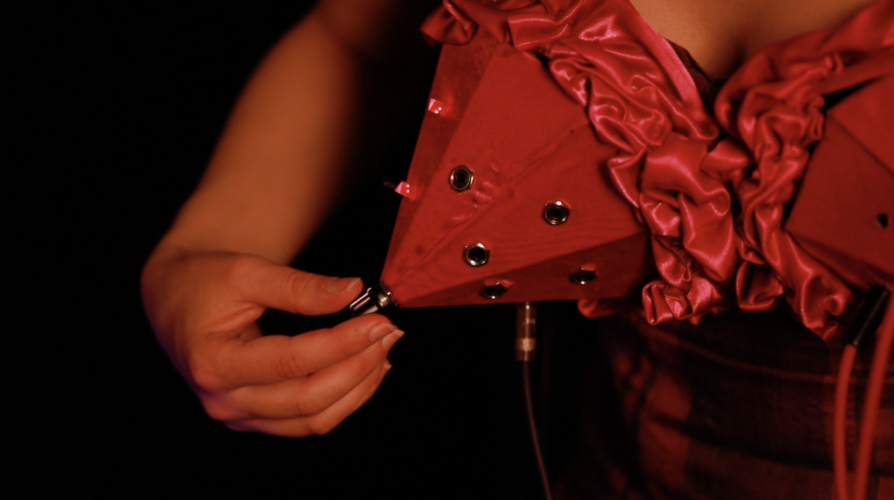
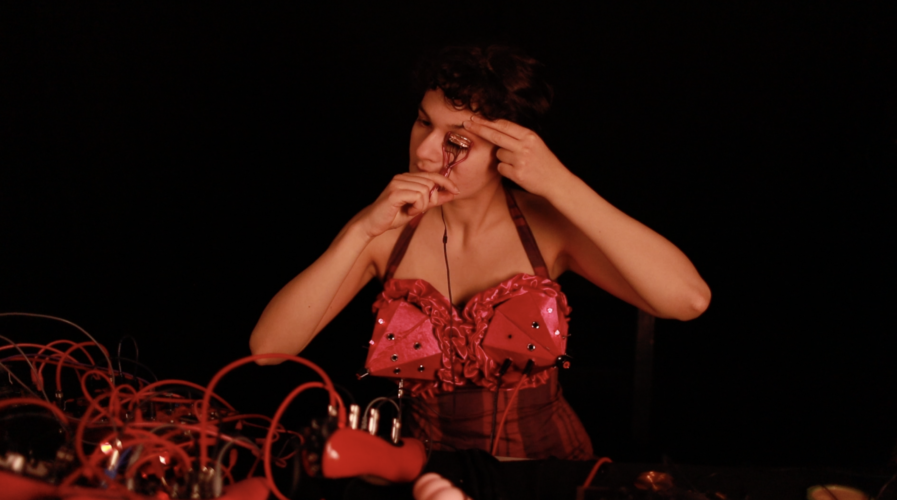
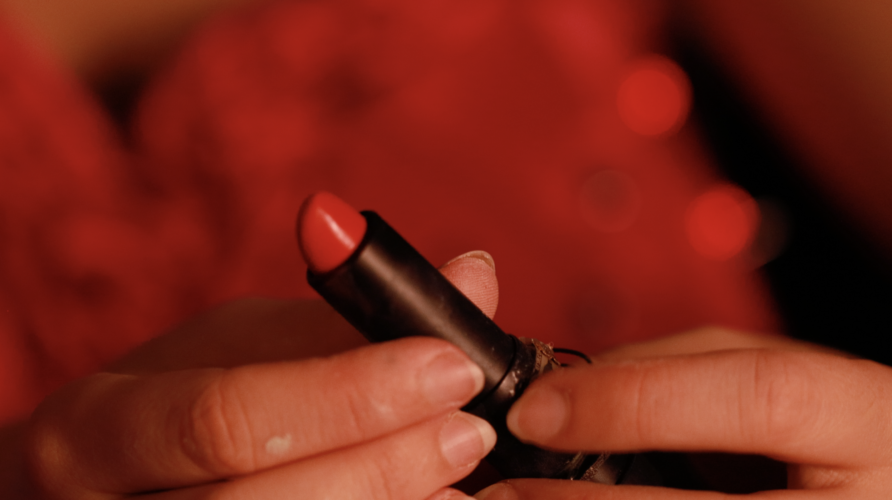
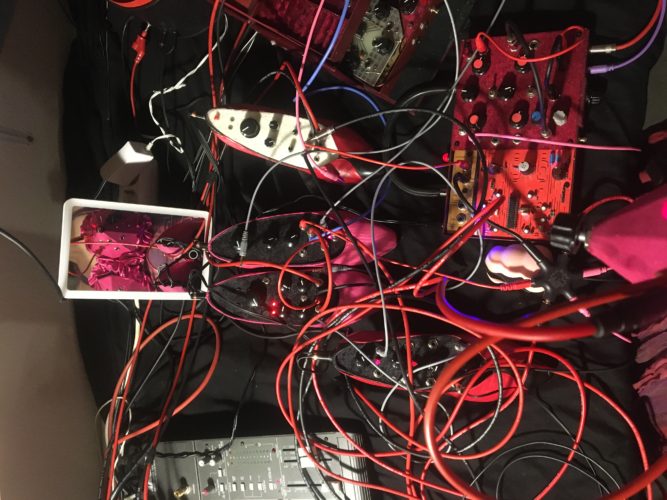
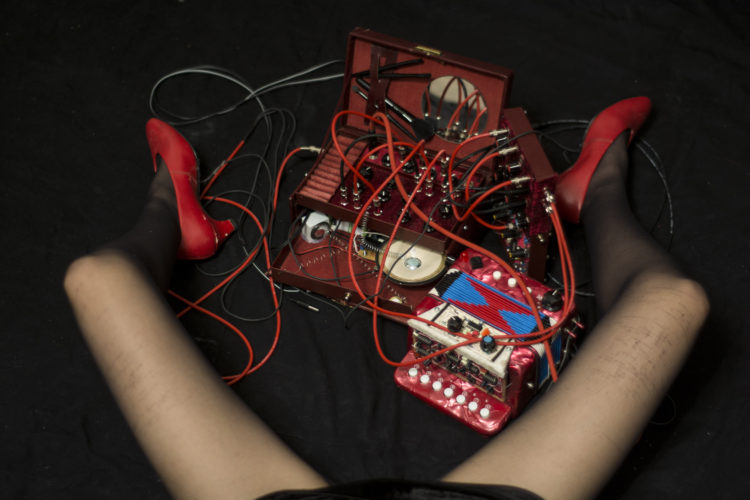
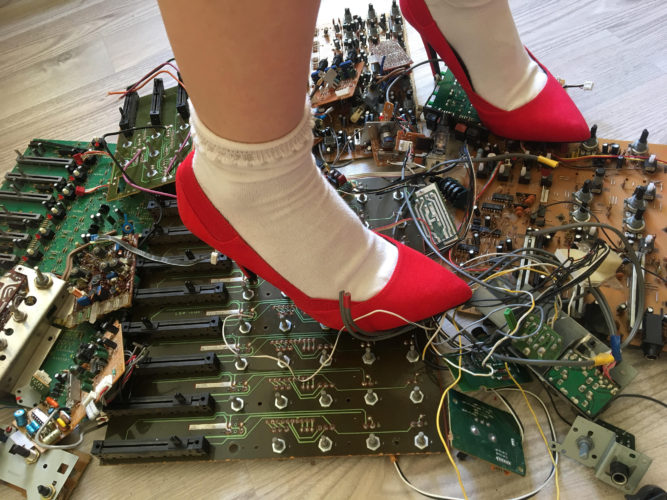
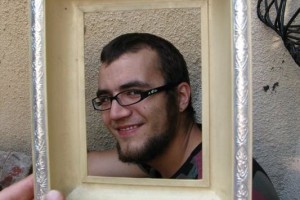
Comments are closed here.